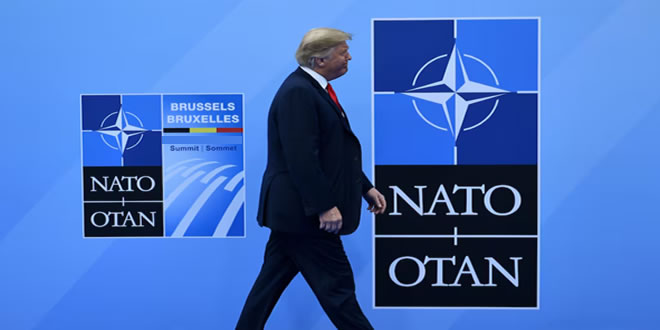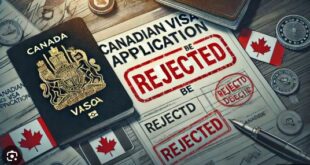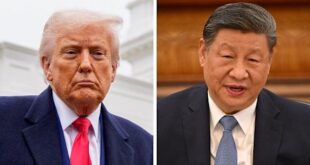The North Atlantic Treaty Organization NATO, established in 1949 as a bulwark against Soviet expansion, has long been a cornerstone of U.S. foreign policy. However, former President Donald Trump has repeatedly expressed skepticism toward the alliance, at times even threatening withdrawal. His stance has alarmed European allies and foreign policy experts who view NATO as essential to transatlantic security.
At present, NATO has 32 member countries. These countries, called NATO Allies, are sovereign states that come together through NATO to discuss political and security issues and make collective decisions by consensus.
The 12 signatories
Some of the Foreign Ministers who signed the Treaty were heavily involved in NATO’s work at a later stage in their careers:
- Belgium: M. Paul-Henri Spaak served as NATO Secretary General from 1957 to 1961.
- Canada: Mr Lester B. Pearson negotiated the Treaty and was one of the “Three Wise Men” who drafted the report on non-military cooperation in NATO, published in 1956 in the wake of the Suez Crisis.
- Denmark: Mr Gustav Rasmussen
- France: M. Robert Schuman was a key architect of the European institutions, who also initiated the idea of a European Defence Community.
- Iceland: Mr Bjarni Benediktsson
- Italy: Count Carlo Sforza
- Luxembourg: M. Joseph Bech
- The Netherlands: Dr D.U. Stikker served as NATO Secretary General from 1961 to 1964.
- Norway: Mr Halvard M. Lange was one of the “Three Wise Men” who drafted the report on non-military cooperation in NATO.
- Portugal: Dr José Caeiro da Matta
- United Kingdom: Mr Ernest Bevin was a main driver behind the creation of NATO and, as Foreign Secretary from 1945 to 1951, he attended the first formative meetings of the North Atlantic Council.
- United States: Mr Dean Acheson attended and chaired meetings of the North Atlantic Council, which was particularly important before the creation of the position of NATO Secretary General in 1952.
Flexibility of NATO membership
On signing the Treaty, countries voluntarily commit themselves to participating in the political consultations and military activities of the Organization. Although each and every signatory to the North Atlantic Treaty is subject to the obligations of the Treaty, there remains a certain degree of flexibility, which allows members to choose how they participate. The memberships of Iceland and France, for instance, illustrate this point.
Trump’s criticism stems from a mix of ideological, financial, and strategic factors, including his “America First” doctrine, frustration with European defense spending, and a preference for transactional diplomacy over traditional alliances. This essay examines the motivations behind Trump’s NATO skepticism and its potential consequences for global stability.
1. The “America First” Doctrine and Skepticism of Alliances
Trump’s foreign policy has been defined by his “America First” approach, which prioritizes U.S. sovereignty, military independence, and economic nationalism over multilateral cooperation. Unlike past presidents—both Republican and Democrat—who viewed NATO as a vital security framework, Trump sees it as an outdated relic that unfairly burdens the U.S.
As NATO celebrates its 75th anniversary, aid for Ukraine and prospects of Donald Trump’s re-election trigger the biggest changes within the bloc since the Cold War.
His transactional worldview clashes with NATO’s foundational principle of collective defense (Article 5), which treats an attack on one member as an attack on all. Trump has repeatedly questioned why the U.S. should automatically defend allies who, in his view, do not contribute enough to their defense. This rhetoric undermines the trust that underpins the alliance, as European leaders worry that Trump could abandon NATO commitments if re-elected.

2. Frustration Over NATO Defense Spending
A central grievance for Donald is that many NATO members fail to meet the alliance’s defense spending target of 2% of GDP. During his presidency, he openly criticized countries like Germany, Belgium, and Spain for relying on U.S. military protection while underspending on their forces.
While his pressure did lead to increased European defense budgets—with more members now meeting the 2% threshold—Trump argues that the U.S. still bears an unfair burden. He even suggested that NATO become a “pay-to-play” alliance, where only nations meeting spending obligations receive full protection. This hardline stance reflects his belief that allies exploit American generosity without reciprocation.
3. Distrust of Multilateralism and Admiration for Authoritarians
Trump’s skepticism of NATO aligns with his broader disdain for international institutions, including the United Nations, the World Trade Organization (WTO), and the World Health Organization (WHO). He views such organizations as bureaucratic, inefficient, and detrimental to U.S. interests. Instead of collective security, he prefers bilateral deals where the U.S. can negotiate from a position of strength.
Additionally, Trump has expressed admiration for authoritarian leaders like Russia’s Vladimir Putin and Hungary’s Viktor Orbán, both of whom oppose NATO expansion. His reluctance to confront Putin—especially regarding Russia’s aggression in Ukraine—has raised concerns that he might weaken NATO to accommodate Moscow. Some analysts speculate that a second Trump term could lead to a U.S. withdrawal from NATO, effectively handing Putin a major strategic victory.
4. Domestic Political Calculations
Trump’s NATO skepticism also plays well with his political base, which tends to favor an isolationist or nationalist foreign policy. By portraying NATO as a financial drain, he reinforces his populist narrative that the U.S. is being “ripped off” by freeloading allies. This messaging resonates with voters who distrust globalist elites and prioritize domestic issues over international commitments.
Furthermore, Trump’s attacks on NATO serve as a broader critique of the foreign policy establishment, which he accuses of prioritizing foreign interests over American workers. This anti-establishment rhetoric has been a key part of his appeal since 2016.
5. Potential Consequences of U.S. Disengagement
If Trump follows through on his threats to weaken U.S. involvement in NATO, several outcomes are possible:
Increased Russian Aggression: A fractured NATO would embolden Putin to test alliance cohesion, potentially through further incursions into Eastern Europe.
European Strategic Independence: Allies like France and Germany may accelerate efforts to build a more autonomous EU defense structure, reducing reliance on the U.S.
Declining U.S. Global Influence: Retreating from NATO would signal American withdrawal from global leadership, creating a power vacuum that China and Russia could exploit.
Erosion of Deterrence: If Article 5 guarantees appear shaky, adversaries might perceive NATO as weak, increasing the risk of conflict.
Donald Trump’s push to distance the U.S. from NATO is driven by his “America First” ideology, frustration with European defense spending, and a preference for transactional diplomacy over traditional alliances. While his demands for greater burden-sharing have merit, his confrontational approach risks destabilizing the alliance that has maintained European security for over 70 years.
The long-term implications of Trump’s NATO skepticism remain uncertain. If he wins re-election in 2024, the U.S. could significantly reduce its role in NATO, leading to a major shift in global power dynamics. Alternatively, European nations may take greater responsibility for their defense, reshaping the future of transatlantic security. Regardless of the outcome, Trump’s stance ensures that NATO’s future will remain a contentious issue in U.S. foreign policy debates.
Finally, NATO has survived Cold War tensions, post-Soviet expansion, and modern hybrid warfare.
However, Donald’s America-centric vision presents one of its greatest challenges yet.
Whether the alliance adapts or fractures may depend on how Europe responds—and whether future U.S. leaders reaffirm or abandon America’s commitment to collective defense.
 Gistfox Your News Window To The World
Gistfox Your News Window To The World 



